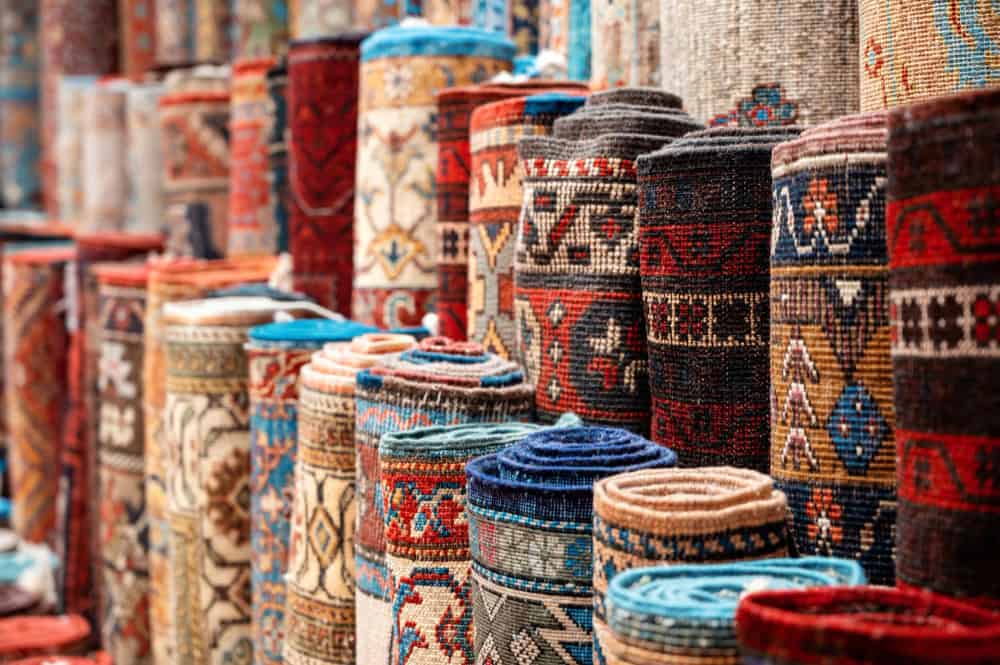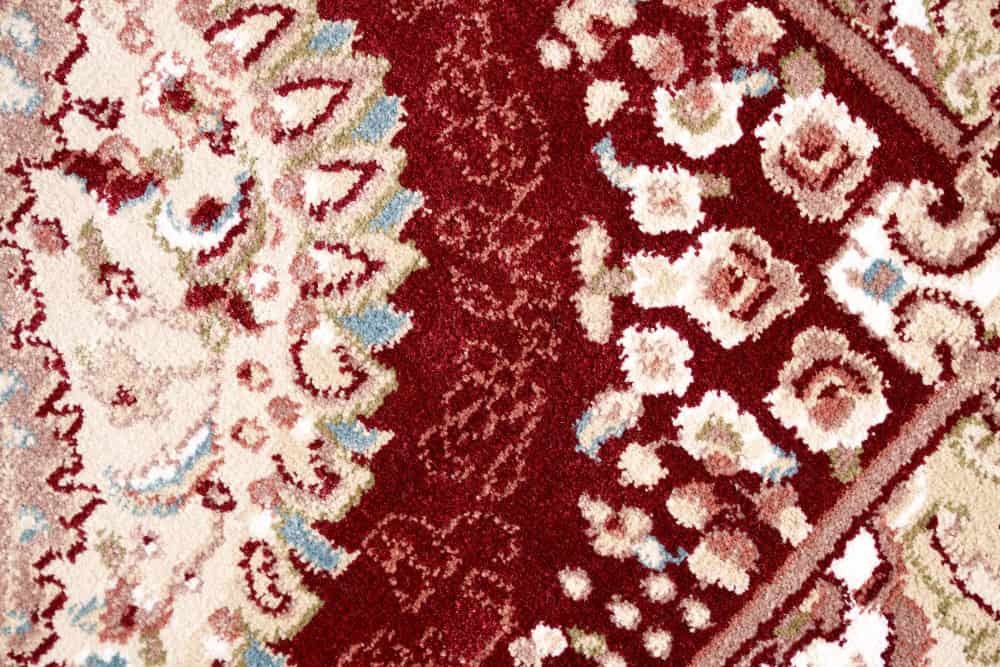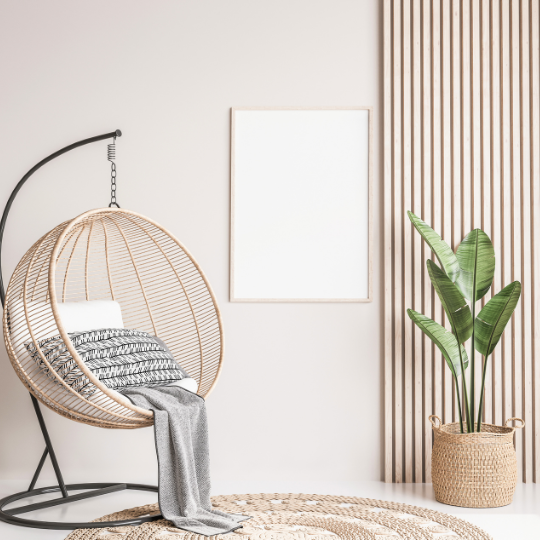How to Clean a Persian Rug: Do’s and Don’ts
Table of Contents
Persian carpets, with their traditional beauty and elegance, accentuate any space. Nevertheless, their delicate designs demand careful maintenance.
While preserving their value relies on home cleaning, this can sometimes become difficult.
This guide explains how to clean a Persian rug, including tips for wool and silk varieties that will keep your rug looking wonderful for years to come.
Understanding the Different Types of Persian Rugs

Take time to determine the type of your oriental rug before you begin cleaning it. The materials it is made out of matter because they will determine how you should clean it.
Persian carpets made of wool are soft and long-lasting. They don’t deteriorate even after heavy foot traffic and continuous use.
Persian wool rugs can handle rough cleaning methods.
Persian silk carpets, on the other hand, are more delicate, have elaborate designs, and feature a plush texture. When learning how to clean them, remember that they require greater care.
Moreover, certain carpets combine the advantages of both materials into one, giving you the best of both worlds, but these mixes still require maintenance.
Wool can handle mild detergents, but silk requires specialised shampoos to protect its delicate fibres. Knowing this difference is key for preserving your rug.
Essential Maintenance Tips for Persian Rugs
Taking care of the superb shape of your Persian rug depends mostly on regular cleaning. Still, there are simpler chores you can do to keep the colours vivid and stop dirt from accumulating.
Proper Vacuuming Techniques
Vacuum regularly to remove surface dust and dirt. Be careful and use a vacuum with a soft brush attachment to avoid damaging the fibres.
Never vacuum the fringes—this can cause them to unravel. Also, avoid beater bars, which are too harsh for delicate rugs and damage them over time.
Shaking and Beating the Rug
Occasionally, take your rug outside and give it a good shake to dislodge dust and debris.
For a deeper clean, hang it and delicately beat it with a broom or rug beater. This method works wonders for removing particles embedded in the fibres. It’s a simple yet effective way to refresh your rug.
Rotating the Rug Regularly
Every few months, rotate your Persian rug to ensure even wear. Foot traffic and sunlight can cause uneven fading, especially in high-traffic areas.
By rotating the rug, you maintain its appearance and prolong its life.
How to Clean a Persian Rug Right at Home

At home, cleaning a Persian rug calls for careful handling, especially if you are dealing with a fragile or costly piece. These two little actions do make a great difference.
Surface Cleaning Techniques
First, thoroughly hoover the rug. Then, combine water with a light detergent or a designated rug shampoo. To be sure this solution doesn’t cause colour bleeding, test it on an inconspicuous area of the rug.
If everything appears okay, always follow the direction of the fibres and gently wipe the rug with a sponge or towel. This maintains the texture of the rug and preserves its designs.
Deep Cleaning by Hand
Soak the carpet in the cleaning solution for more in-depth cleaning. Then, using a delicate brush, scrape in the direction of the threads.
Following cleaning, wash the rug thoroughly with fresh water to remove any soap residue.
To avoid mildew, the rug must dry completely. Hang it in a well-ventilated area. Also, avoid direct sunshine, which ruins the colours.
Accordingly, the drying process should be kept light because this is an important part of Persian rug washing.
Spot Cleaning and Stain Removal to the Rescue
We’ve all been there—a cup of coffee teetering on the edge, a clumsy moment, and before you know it, your lovely carpet’s in trouble.
Carpet emergency? Absolutely! Still, don’t panic; the world is not about to crumble. Using the correct strategy can help you pull that mini-crisis under control.
Whether it’s a spill, stain, or bit of mud from those unexpected visitors, tackling a carpet emergency can be a breeze with a few clever tricks up your sleeve. Knowing how to spot-clean a Persian rug can save your carpet from long-term damage.
Immediate Action for Stains
You should blot spills immediately with a white cloth. Never rub! It can aggravate the stain’s spread and immersion into the fibres, thereby making removal much more difficult.
Rather, lightly wipe the stain to help absorb as much of the spill as you can. Mix vinegar and water for harder stains, such as coffee.
A Step Closer to a Flawless Clean
Say no to harsh chemicals because they can discolour and weaken the fibres, compromising the rug’s beauty.
Instead, stick to mild, rug-specific cleaners. They’re designed to clean without causing harm. Hence, it’s worth the extra effort to keep your rug in pristine condition.
Note that this is especially true when considering if you can clean a Persian rug stain with a carpet cleaner.
Insider Tip: Use a sponge to clean your entire rug.
Although most stains don’t cover the whole rug, cleaning the entire thing is usually a good idea when eliminating stains.
Many times, the area from which you remove the stain seems uneven as the patch turns out cleaner than the remainder of the carpeting.
This can make you wish to clean the full item. If yes, below are the five steps you ought to apply:
- Add ½ cup of mild detergent to a small bucket of room-temperature water;
- Wipe over the rug’s grid design with a fresh sponge dipped into the cleaning solution;
- Rinse the sponge often as you wipe;
- Go over the whole rug with clean water one more time to eliminate any extra detergent once you’re done cleaning the rug;
- Dry the residual wetness with a new towel.
Let your rug naturally dry, and don’t toss it into the dryer. For a bonus, if your rug smells bad or musty, put some lemon juice on it and let it sit for two hours before washing.
This will assist in eliminating any odour, even if you intend not to clean your rug. Just be careful to use a moist sponge to clean any extra lemon juice once the two hours are over.
Caring for Your Rug Long-term

Keeping your oriental rug beautiful calls for consistent care. Particularly in busy locations, rotate your rug every few months to provide even wear.
By keeping some areas from fading more quickly than others, this basic action can extend the life of your precious item.
In addition, let the rug dry in a well-ventilated place, away from direct sunlight, after every washing. Sunlight can destroy the vivid hues that define Persian carpets so uniquely.
It’s time for professional cleaning if you have followed all these guidelines and the stain still shows or if the rug appears to have lost its shine.
If you have children or dogs, clean your oriental rug every six months.
Insider Tip: Steam cleaning is a popular way of cleaning carpets, but it’s a big “no” for old or vintage Persian rugs.
Steam can saturate the rug, resulting in the growth of mildew. Also, it can cause the rug’s dyes to bleed or move.
How to wash Persian rugs expertly? Sometimes, it’s best left to those equipped with the correct instruments and knowledge. So, hire a carpet cleaning service to get the job done in no time.
Conclusion About How to Clean a Persian Rug
Maintaining the beauty and lifetime of your Persian rug depends on the correct means of care and cleaning. Regular care paired with light cleaning methods helps your rug remain at its best.
Remember to act fast when accidents happen, and steer clear of aggressive cleaning techniques that can damage the fibres. Cleaning Persian rugs properly and cautiously will always keep your treasure full of life.




2 Comments
Jim
April 16, 2025 at 10:44 pm
My experience is that these rugs have detergent embedded in them. It is either from the original cleaner after it is woven or from the popular DIY carpet cleaners of the 70s and 80s that left the detergent deep in the carpet.
I just spent an hour with the hose flipping a runner over and over at least ten times with it still running foam and color at the end, just less. This one is the worst in my memory and there is so much left that i can feel the slickness when touching the wet wool. This is obviously not good for the rug which I would like to think should be good for another 100 years.
Any ideas how to remove or kill the remaining detergent? My wife would freak out if I threw it in the swimming pool!
Sabina Green
April 17, 2025 at 8:27 pm
Thank you so much for sharing your experience — it sounds like you’ve really been through the wringer with this rug (no pun intended!). You’re absolutely right: excess detergent, whether from older cleaning methods or modern DIY approaches, can linger deep in the fibres, especially in wool rugs, and cause long-term damage if not properly rinsed out.
If the rug is still slick to the touch after that much rinsing, there may still be a build-up that’s proving stubborn. Here are a few suggestions that might help remove the remaining detergent safely:
1. Use a vinegar rinse:
A mix of white vinegar and water (about 1 part vinegar to 4 parts water) can help break down detergent residue. Gently sponge this solution through the rug (don’t soak it) and rinse with clean water. Vinegar also helps restore the natural pH of wool.
2. Avoid hot water:
Stick to cool or lukewarm water to prevent setting any leftover residue or damaging the fibres.
3. Use a wet/dry vacuum:
After rinsing, a wet/dry vac can help extract more water and residue than just rolling or pressing.
4. Consider professional help:
If it’s a valuable or sentimental piece, a professional rug cleaner (preferably one who specialises in Persian or antique wool rugs) might be worth the investment, especially to preserve it for another 100 years!
And I totally understand your wife’s concerns about the swimming pool — it’s probably best to avoid chlorinated water at all costs!
Thanks again for contributing — comments like yours really add depth to these conversations. I might even update the blog post to include a section on dealing with detergent residue, since it’s clearly a common problem!